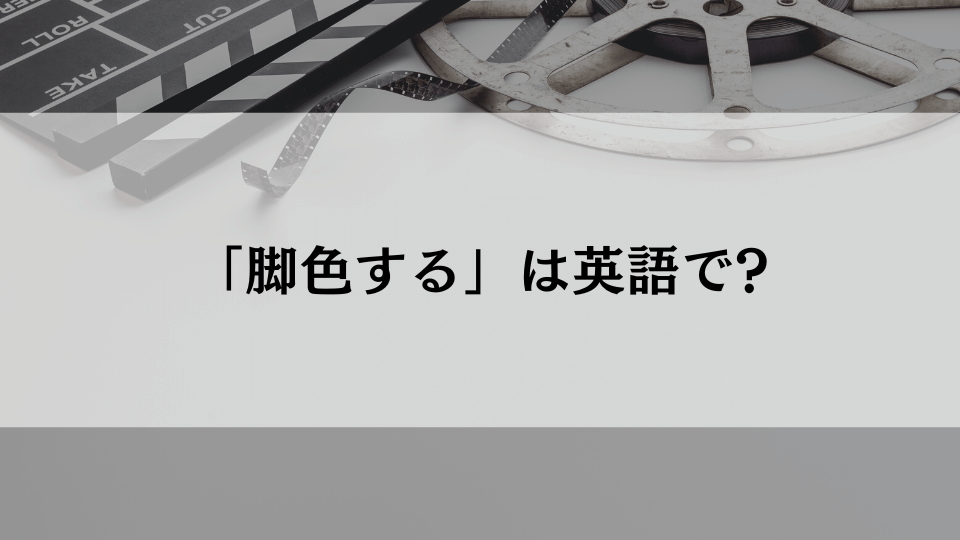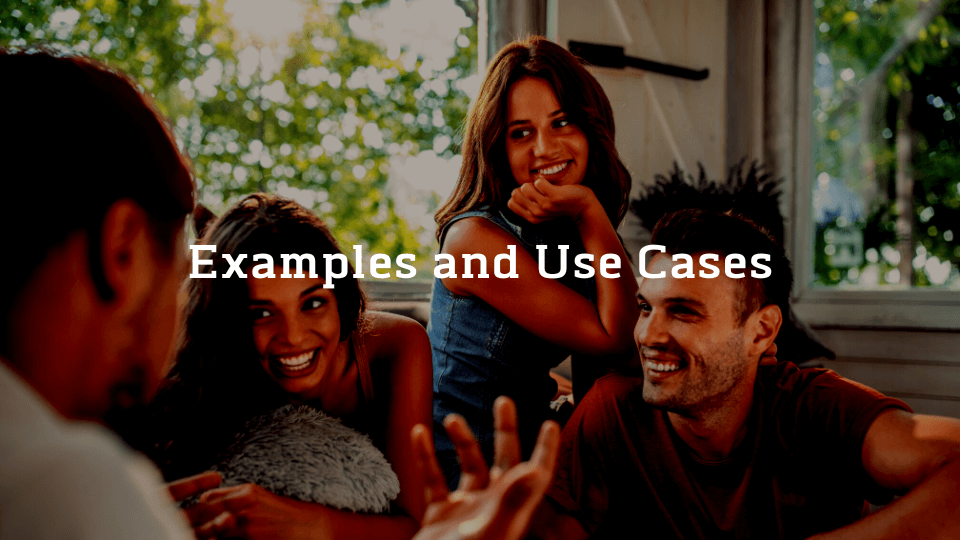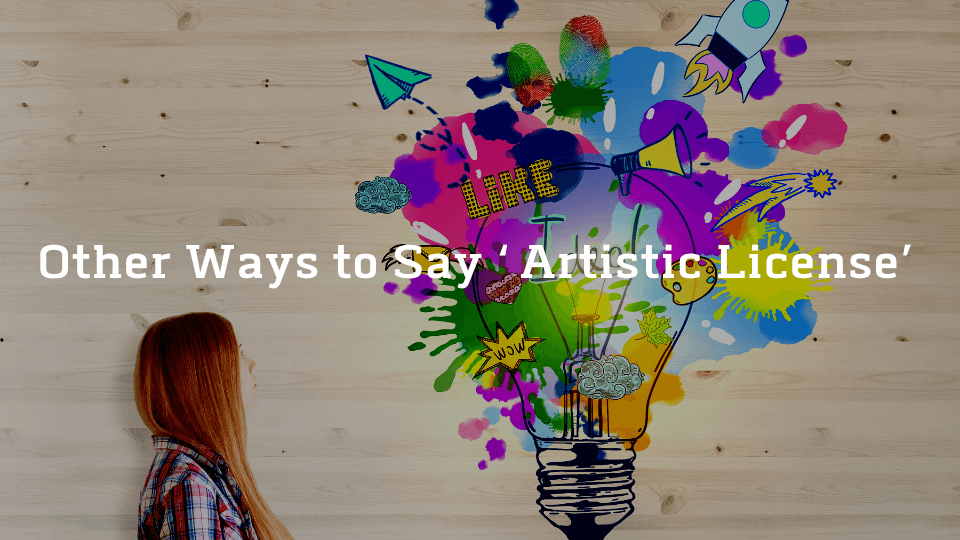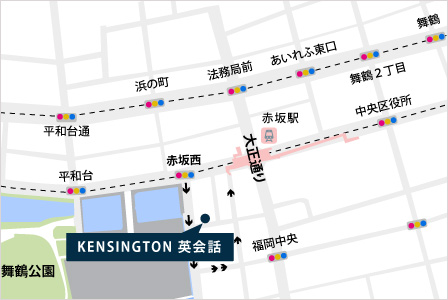【講師デニー】
今日のブログでは、「artistic license (脚色する)」というフレーズについて解説します。
これはよく使われる表現ですが、第二言語として英語を学ぶ人にとっては最初は少し混乱するかもしれません。
誰かが会話で「artistic license」という言葉を使った時でも、文脈を理解し全体の意味をつかめるように、この言葉を事前に知っておくと役に立つでしょう。
「artistic license」の意味 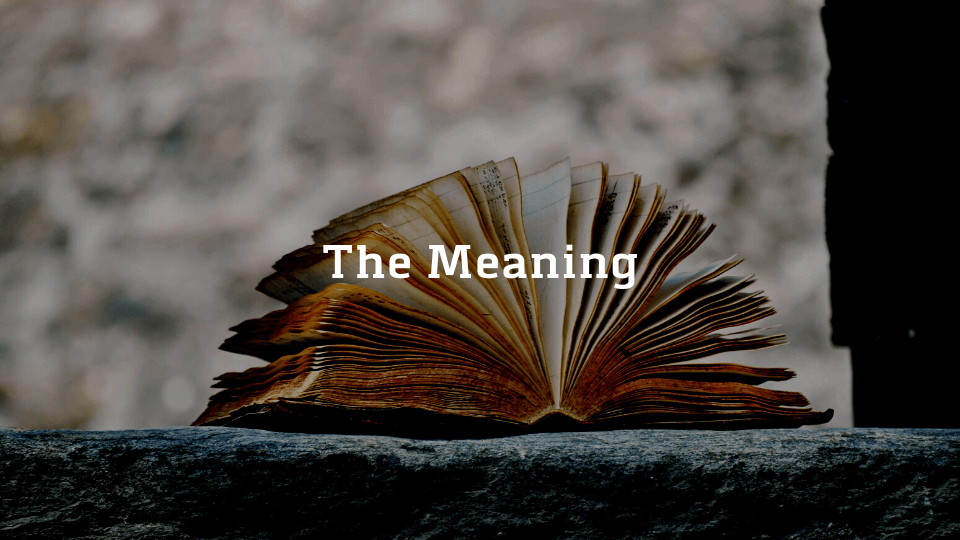
「artistic license」を文字通りに捉えると、芸術に関する何らかのライセンスを持っているということになります。
しかし、実際はライセンスとは何の関係もありません。
「artistic license」とは、創造的である自由をもつこと、またはあなたが語る物語に何かを追加したり取り除いたりして、それをもっと魅力的で面白く、または自分にとって良いものにすることです。
例えば、事故に関して自分の過ちについての事実は省略して、他人が悪く見えるように話を大げさにすることがよくあります。
これが「artistic license」の考え方の一つです。
「artistic license」の例文
それではここで2つの例を挙げます。
1つは事実に基づいた事実の話、もう1つは「artistic license」が適用された同じ話です。
[事実の話]
I went to the shop, bought some apples and then relaxed at the park. I also met my friend!
(私はお店に行き、リンゴを買ってから公園でくつろぎました。友達にも会いました!)
[ “artistic license”が適用された話]
As I traveled to the local markets on a sunny but breezy day, I decided to purchase local fruits sold by a wonderful merchant. I then explored nature nearby in a quiet park where I encountered an old friend of mine.
(晴れていて微風が心地よい日に地元の市場に足を運び、素敵なお店の人から地元の果物を購入することにしました。その後、近くの静かな公園で自然を散策し、昔の友人にばったり会いました。)
最初の文はとても基本的で事実に基づいており、要点を押さえていますが、2つ目は非常に詳細で多くの誇張が加えられています。
物語を語ることは面白いものであるべきです!
下記の例文では、内容は詳細で芸術的ですが、話し手が赤信号を渡っていたことを省略しています。
[事実の話]
He rode his bike and came out of nowhere, hitting me on the side, but I was in the wrong because I was riding on a red light.
(彼は自転車に乗って突然現れ、私の横をぶつけてきましたが、私が悪かったのは赤信号なのに自転車で走っていたからです。)
[ “artistic license”が適用された話]
Out of the blue, he appeared on his bike, catching me by surprise with an unexpected collision.
(突然、彼は自転車に乗って現れ、予期せぬ衝突で私を驚かせました。)
最後に、文の中での使い方をご紹介します。
He took a lot of artistic license with that story.
(彼はその話にかなりの脚色を加えました。)
The movie Saving Private Ryan is pretty realistic, but there’s also a lot of artistic license applied.
(映画『プライベート・ライアン』はかなり現実的ですが、かなりの脚色も加えられています。)
「artistic license」の言い換え
「artistic license」を他の言い方で言うとすれば、「be creative (創造的、クリエイティブである)」と言えます。
例えば、
You can be pretty creative with the story, you know.
(その話はかなり創造的にできるよね。)
That story got very creative even if it wasn’t realistic.
(その話は現実的ではなかったけれども、かなり創造的になりました。)
The movie ‘Braveheart’ was fun, but not realistic. They got a bit creative with history.
(映画『ブレイブハート』は楽しかったけど、現実的ではない。彼らは歴史にちょっと創造的な要素を加えています。)
私の「artistic license」とまとめ
私の話をすると、英語を教えている時の私の発言は「artistic license」を多く用いていることが多いです。
なぜなら、生徒さんたちに基本レベルから上級レベルまでの言葉や、物語を語るスタイルで話される英語を聞くことが役立つからです。
これは創造的な思考を広げるのに役立ち、また生徒さんたちに英語がどのように機能し、どれほど美しく響くかを示すことができます。
「artistic license」という言葉の意味と、それを生活の中で使う方法がお分かりいただけたでしょうか。
このブログがお役に立てたら嬉しいです。
実践的な英語ならケンジントン英会話
ケンジントン英会話では、教科書には載っていない、生きた表現を身に付けられます。
福岡市内の教室やオンラインで、経験豊富でフレンドリーな講師と一緒に英語を学びませんか?
実践的な英語を学びたい方はケンジントン英会話の公式サイトをチェック!
[英語原文]
What Does Artistic License Mean?
Today’s blog post is all about the phrase “artistic license”, which is a somewhat common phrase in general English that may be a bit confusing at first for secondary language learners. It’s a useful one to know in the case that someone applies it to a sentence in conversation, as it’ll help you get context and understanding overall.
The Meaning
If we are literal, “artistic license” would mean you have some kind of license for art. That said, it has nothing to do with this. The meaning of artistic license is to have the freedom to be creative or add onto or remove parts of a story that you’re telling in order to make it more engaging, interesting or even make it more favorable to you. People would often do this in order to make them look good in an accident, for example, where they omit facts about their mistakes, but add a lot of exaggeration to the story to make the other person look bad. That’s one way you can think of “artistic license”.
Examples and Use Cases
There’ll be two examples here: one showing a story that is factual and true, and then the same story but with “artistic license” applied.
“I went to the shop, bought some apples and then relaxed at the park. I also met my friend!”
vs
“As I traveled to the local markets on a sunny but breezy day, I decided to purchase local fruits sold by a wonderful merchant. I then explored nature nearby in a quiet park where I encountered an old friend of mine.”
Notice that the first sentence is very basic, factual and to the point, but the second is very detailed with a lot of exaggeration applied. Telling a story is meant to be interesting!
“He rode his bike and came out of nowhere, hitting me on the side, but I was in the wrong because I was riding on a red light.”
vs
“Out of the blue, he appeared on his bike, catching me by surprise with an unexpected collision.”
Notice that it’s detailed and artistic, but omits that the speaker crossed a red light.
Finally, using the word in a sentence:
“He took a lot of artistic license with that story.”
“The movie Saving Private Ryan is pretty realistic, but there’s also a lot of artistic license applied.”
Other Ways to Say “Artistic License”
Another way to say “artistic license” is to “be creative.” ie.
“You can be pretty creative with the story, you know.”
“That story got very creative even if it wasn’t realistic.”
“The movie ‘Braveheart’ was fun, but not realistic. They got a bit creative with history.”
Personal Examples and Conclusion
In my daily life, I tend to have a lot of artistic license with what I say in English teaching, because it’s useful for students to hear me speak on a basic level of English, up to advanced, storytelling styles. It’s a useful ability to have because it stretches your creative mind and also shows students how English can function – and how beautiful it could sound.
Hopefully you now understand both the meaning of the term, and how to have artistic license in your own life.
~*~*~*~ \ Follow me / ~*~*~*~
Instagram : @kensington_eikaiwa
Twitter : @Kensington_Eng
Facebook : @kensingtoneikaiwa
YouTube : KENSINGTON英会話
~*~*~*~*~*~*~*~*~*~*~*~*~*
◆お問い合わせはこちら
ケンジントン英会話:お問い合わせフォーム






















